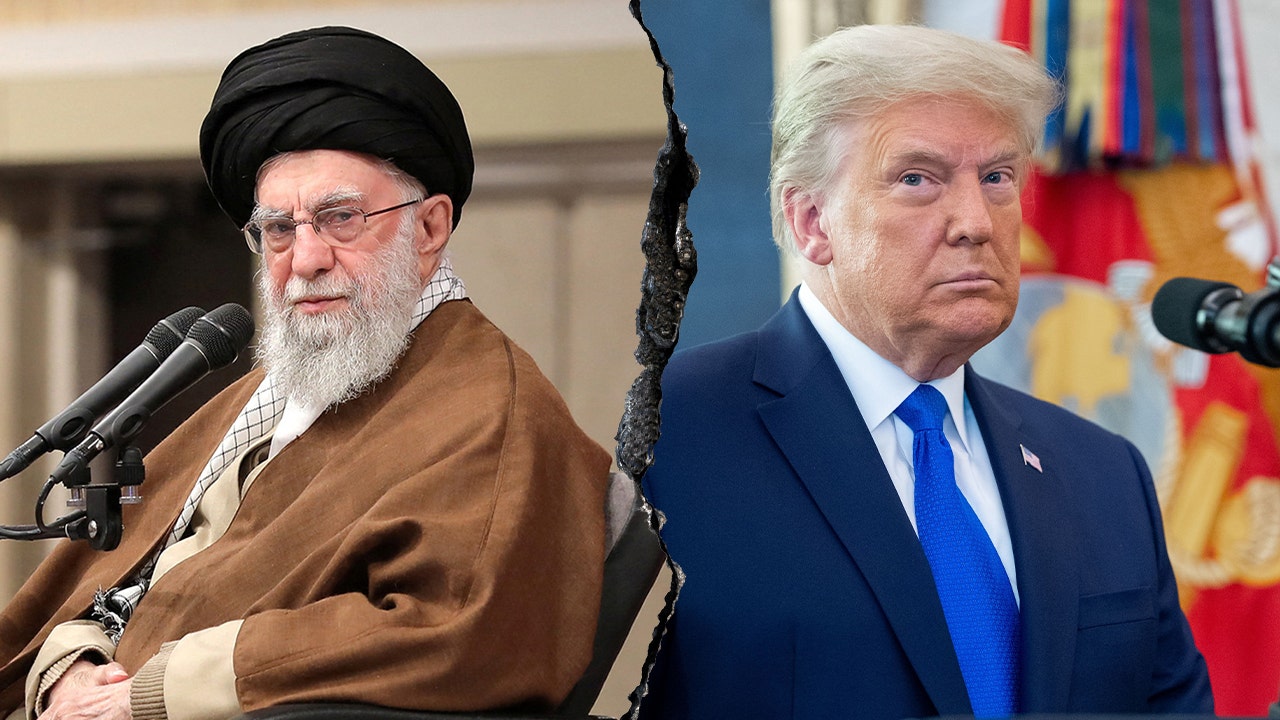Ohio
Founding father Gen. Anthony Wayne’s legacy is getting a second look at Ohio’s Wayne National Forest

NELSONVILLE, Ohio (AP) — Some 40 Native American tribes have ancestral ties to Wayne National Forest, a quarter-million acres spread across portions of Appalachian southeastern Ohio. Their citizens have never stopped helping the U.S. Forest Service manage this expanse of forested hills, hollows, streams and lakes — even as the name recalls a violent past.
Now, a vigorous debate is underway over a Forest Service proposal to replace the name of Gen. Anthony Wayne, a founding father who Americans of an earlier era celebrated as an “Indian fighter,” with something more neutral: Buckeye National Forest, after the state tree.
Forest Manager Lee Stewart said tribes had been asking for a name change for decades, but their request was formalized last year as part of a sweeping review of derogatory place names undertaken by the Biden administration.
Since 2021, the names of about 650 places and geographic features across the country have been renamed, with involvement by the same federal board that in earlier eras helped get rid of the N-word and a pejorative word for Japanese.
“In thinking of the offensive nature (of the name) to tribes, it’s the opportunity to begin to heal, to begin to connect our forest deeper than just around a name,” Stewart said. “Ohio has thousands of years of history. The history here is very, very deep — pre-history to historic times, where Wayne occupies his space, to the history once we became a state. So Buckeye, we feel, reflects that.”
The public comment period ends Monday, with U.S. Agriculture Secretary Tom Vilsack to receive the feedback and make a final decision. It would be the first national forest renaming since 2007.
Proponents see the name change as an act of respect for Indigenous people whose ancestors lived on the land and whose citizens continue to offer their skill and expertise to stewardship of the land, some through treaties with the U.S. government.
The forest’s 381 square miles (987 square kilometers) are used for timber and other natural resources, in addition to featuring campgrounds, a horseback riding network and off-highway vehicle trails.
Before a federal government purchase in 1934, the land was dug, blasted and mined for coal. It was 1951 when the forest was named for Wayne, a Revolutionary War leader whose legacy has been revisited during the nation’s recent racial reckoning.
Wayne commanded Army forces during the Northwest Indian War, a confrontation on the American frontier that ended with the Battle of Fallen Timbers, a key victory over confederated Native forces that allied with the British. The resulting truce, the Treaty of Greenville, largely ceded Native rights to most of the territory that became the future state of Ohio, a result some these days see as “ethnic cleansing.”
Logan York, a representative of the Miami Tribe of Oklahoma, said in a statement that Anthony Wayne’s actions “ultimately led to the forced removal at gunpoint of our Miami ancestors from our homelands in 1846.”
“Wayne may be a Revolutionary War hero to some, but he is also the main villain in our story of resistance, trying to keep our homes and maintain our lives,” said Logan, the tribal historic preservation officer. “For a National Forest to bear the name of Anthony Wayne is a harmful, and painful reminder and devalues us as Native peoples of Ohio.”
Opposition to the proposed name change, which has an estimated $400,000 price tag, also is vigorous.
Donald Schultz, 89, who has lived in proximity to the forest all his life, dropped by Wayne headquarters this week to register his objections.
“I am concerned about changing the name of everything, just history,” he said. “We need to keep the history this country had. We don’t need to change the names of all the history.”
Schultz said he recognizes the U.S. government “treated the people horribly that were here, but by the same token, those same people treated the people that were coming here horribly.”
“This was border warfare. It was ugly on all sides,” said Toledo-based historian Mary Stockwell, author of “Unlikely General: ‘Mad’ Anthony Wayne and the Battle for America” and a book about the removal of Native Americans from Ohio.
Stockwell opposes removing Wayne’s name from the forest. She believes he has been miscast by history as the “mad” general, when he actually viewed it as his “great misfortune” that President George Washington chose him “to come out to Ohio in 1791, raise an army and face the British-Indian coalition that was stopping the advance of the U.S. across the Ohio River.”
“You take down all the statues and rename everything, that’s not going to change our turbulent, creative, wonderful and often difficult past,” she said. “We’ve got to tell everybody’s story.”
Stewart said the Forest Service appreciates Wayne’s significant legacy, which included building the fort at Fort Wayne, Indiana, and inspiring the screen name of Hollywood icon John Wayne.
“We get it,” he said. “This isn’t about erasing Wayne out of history, it’s about reconciliation. To make (the tribes) say ‘Wayne’ every time they engage, it’s difficult.”
It’s appropriate for societal viewpoints to evolve, York said.
“As we look back on history, today we all have increased knowledge that leads to greater understanding, and an excellent way to reflect that is not to forget the past but to change as we change as a people,” he said in the tribal statement.
“Wayne might have been a hero to some but not to all, and National Forests are for everyone to enjoy equally, and the name should reflect that,” York said.

Ohio
Ohio Humanities get stopgap funding, but more needed after federal cuts and unclear future

Top headlines of the week, June 6 2025
Here are some stories you may have missed this week in central Ohio.
- The Trump administration drastically cut funding for the National Endowment for the Humanities, affecting grants to arts and culture organizations nationwide.
- The Mellon Foundation provided stopgap funding to state humanities councils, but it’s insufficient to replace lost federal funds, officials said.
- Ohio Humanities and other organizations are advocating for restored NEH funding in the federal budget.
After National Endowment of Humanities canceled tens of millions of grants to arts and culture institutions around the country April 1, including $2 million in Ohio, disproportionately affecting smaller and rural institutions, officials called the cuts “heartbreaking.”
Now, humanities funds around the country could breathe a small sigh of relief after the Mellon Foundation announced in late April that it would send each state council a grant to help each of them stay afloat, but that is a fraction of the once-reliable federal funding.
Each state humanities council got $200,000 in unrestricted funding to continue operating and up to $50,000 in additional matching funds.
The stopgap in funding is helpful, but the organizations need more stable funding to continue their work, Ohio Humanities Executive Director Rebecca Asmo said in an email to The Dispatch.
“The grant from the Mellon Foundation is an important bridge in funding that will help us respond to this crisis in the short term, but it in no way can replace the consistency and amount of federal funding that has been available to support communities throughout Ohio for the past 50+ years,” Asmo said.
Ohio Humanities moved up its annual fundraising campaign to help make the match and is about halfway to the goal a month after the initial grant announcement, Asmo said. But more funding is needed.
“The NEH contract termination abruptly eliminated $900,000 worth of funding that was anticipated between March 14 and Sept. 30, 2025, so while the Mellon funds are an important bridge, there is still much that is lost and much more we need to work to raise beyond the match,” Asmo said.
Although discourse about President Donald Trump’s “Big Beautiful Bill” has focused on proposed cuts to Medicaid and boosting national debt by $2.8 trillion over the next decade, it also omits future funding for cultural institutions, including the NEH and the National Endowment for the Arts.
Asmo said the organization is working to advocate for NEH funding in the federal budget, which barely passed the House and has an uphill battle in the Senate.
The NEH distributes funding around the country through state humanities councils, which were established in the early 1970s to facilitate more even distribution of grants around the country.
The Federation of State Humanities Councils and Oregon’s council also sued the Trump administration in mid-May. Although Ohio is not part of the lawsuit, Asmo said Ohio Humanities is paying close attention to the proceedings.
And although the National Endowment for the Humanities announced several new projects, including $260,000 to three in Ohio, this does not restore funding for the other projects with canceled funding.
“While we are encouraged to see NEH distributing grant funding, we are confused as to why these grants are being distributed when funds to state humanities councils were terminated. Over half of these grants are going to just six states — California, Illinois, Maryland, Massachusetts, New York and Washington, D.C.,” Asmo said.
The NEH did not respond to a request for comment June 6.
The organization posted a statement April 23, weeks after the initial funding cuts were announced, that said the NEH cancelled awards “at variance with agency priorities, including but not limited to those on diversity, equity, and inclusion (or DEI) and environmental justice, as well as awards that may not inspire public confidence in the use of taxpayer funds.”
Ohio Humanities distributed 19 grants totaling nearly $148,000 to organizations around central Ohio in 2024, including a local history walking tour, an oral history project documenting women in prison and a documentary series about the Hopewell Earthworks.
Anna Lynn Winfrey covers the western suburbs for The Columbus Dispatch. She can be reached at awinfrey@dispatch.com.
Ohio
Ohio State Buckeyes Legend Put on Notice With Brutally Honest Take

While Justin Fields enjoyed a brilliant run with the Ohio State Buckeyes, his time in the NFL has not been nearly as as smooth.
Fields was originally selected by the Chicago Bears with the 11th overall pick of the 2021 NFL Draft, but the quarterback is already on his third team, as he was traded to the Pittsburgh Steelers last year and signed with the New York Jets in free agency earlier this offseason.
The 26-year-old is expected to start for the Jets in 2025, but Nick Shook of NFL.com feels that this may be Fields’ last real opportunity on the professional level.
“Fields signed a two-year, $40 million deal to become the Jets’ chosen new starter in 2025, but if we look at what it might cost them to get out of said deal after the coming season, it’s clear this is a one-year tryout,” Shook wrote. “A post-June 1 trade next offseason would clear all but $3 million of his $23 million cap number in 2026, per Over The Cap. Fields must prove he’s worth keeping in 2025 because, generally speaking, it feels as if the NFL’s intrigue regarding the fifth-year pro is starting to run out.”
Fields has yet to find his footing in the league. His best season to date came with the Bears in 2023, when he made 13 starts and threw for 2,562 yards, 16 touchdowns and nine interceptions while completing 61.4 percent of his passes and posting a passer rating of 86.3. Additionally, he rushed for 657 yards and four scores.
Last year, the Ohio State product made six starts for the Steelers, appearing in 10 games. During that time, he finished with 1,106 yards, five touchdowns and five picks, making good on 65.8 percent of his throws. He chipped in 289 yards while punching in five scores on the ground.
Fields definitely possesses dual-threat capabilities, but he is going to have to prove that he can consistently make throws week in and week out before anyone commits to him long term. We will see if he can do that with the Jets next fall.
MORE: Ohio State Coach Stamps Massive Label on Unexpected Weapon
MORE: Ohio State Buckeyes Tight End Projected to Make School History Twice
MORE: Ohio State Buckeyes Receive Brutal 2025 Prediction When It Comes to Michigan
MORE: Ohio State Buckeyes Getting Major Recruiting Help from Unlikely Source
MORE: Former Ohio State WR Named in Mind-Blowing NFL Trade Speculation
Ohio
Obituary for Terry P. McGinnis at Davis-Turner

-

 Politics1 week ago
Politics1 week agoMichelle Obama facing backlash over claim about women's reproductive health
-

 Technology1 week ago
Technology1 week agoOpenAI wants ChatGPT to be a ‘super assistant’ for every part of your life
-

 Movie Reviews1 week ago
Movie Reviews1 week agoThe Verdict Movie Review: When manipulation meets its match
-

 West3 days ago
West3 days agoBattle over Space Command HQ location heats up as lawmakers press new Air Force secretary
-

 Finance1 week ago
Finance1 week agoHere's what will boost your feeling of financial well-being the most, researchers say
-

 Technology1 week ago
Technology1 week agoWhy do SpaceX rockets keep exploding?
-

 World1 week ago
World1 week agoTwo killed in Russian attacks on Ukraine before possible talks in Turkiye
-

 News1 week ago
News1 week agoDepartment of Homeland Security lists sanctuary jurisdictions in Northern California

















